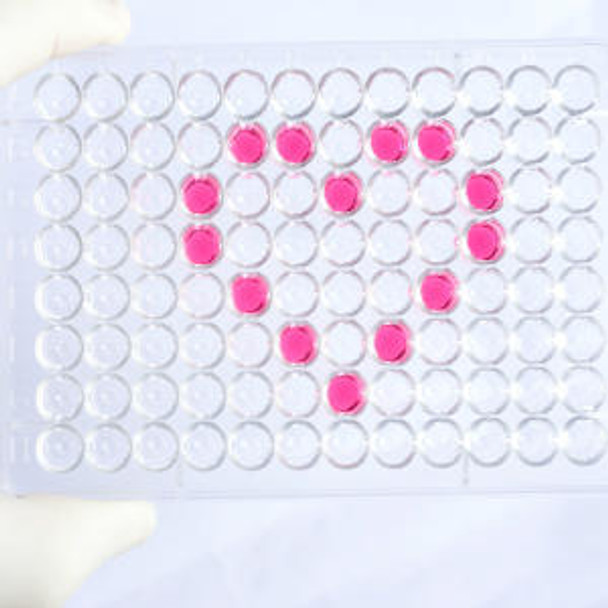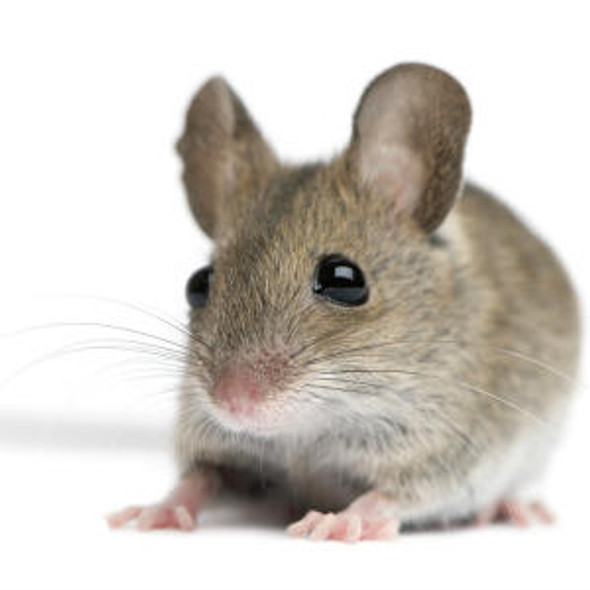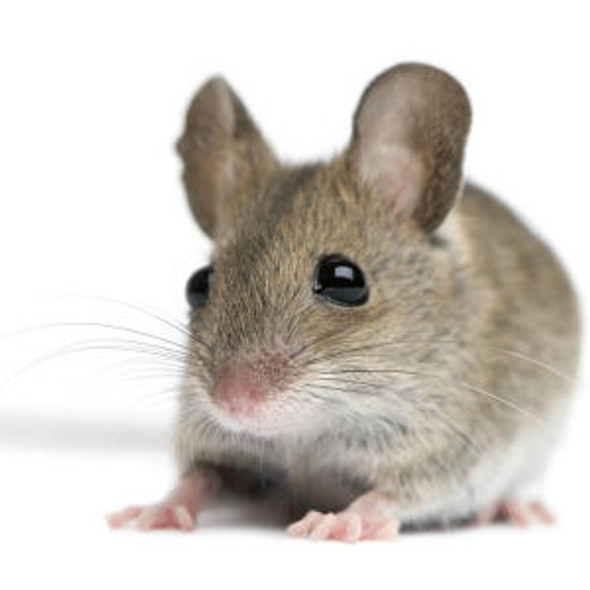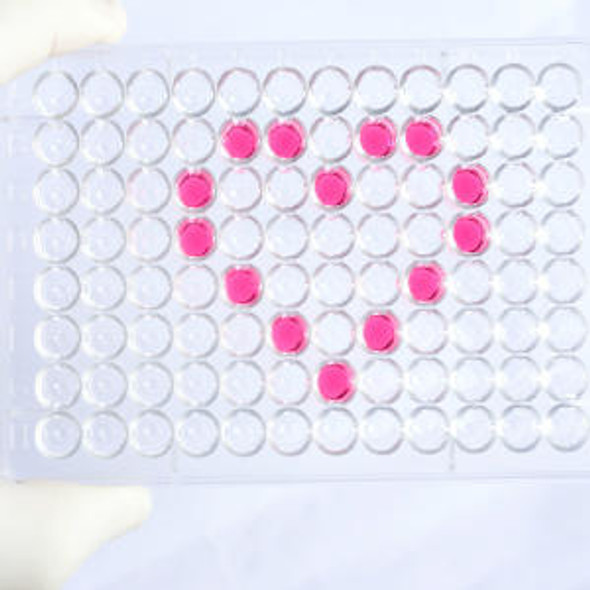Human NAD-dependent protein deacylase sirtuin-5, mitochondrial (SIRT5) ELISA Kit (HUEB1157)
- SKU:
- HUEB1157
- Product Type:
- ELISA Kit
- Size:
- 96 Assays
- Uniprot:
- Q9NXA8
- Range:
- 0.156-10 ng/mL
- ELISA Type:
- Sandwich
- Synonyms:
- SIRT5, NAD-dependent deacetylase sirtuin-5, SIR2L5
- Reactivity:
- Human
Description
Human NAD-dependent protein deacylase sirtuin-5, mitochondrial (SIRT5) ELISA Kit
The Human NAD-Dependent Protein Deacylase Sirtuin 5 (Mitochondrial SIRT5) ELISA Kit is a reliable and accurate assay used for the quantitative measurement of SIRT5 levels in human samples such as serum, plasma, and cell culture supernatants. This kit offers high sensitivity and specificity, ensuring precise and consistent results for a variety of research applications.SIRT5 is a mitochondrial deacylase enzyme that plays a critical role in regulating various cellular processes, including metabolism, oxidative stress response, and aging. Dysregulation of SIRT5 has been implicated in a wide range of diseases, such as cancer, metabolic disorders, and neurodegenerative conditions, highlighting its importance as a potential therapeutic target.
By using the Human NAD-Dependent Protein Deacylase Sirtuin 5 ELISA Kit, researchers can accurately measure SIRT5 levels in biological samples, allowing for a better understanding of its functions and potential implications in disease pathology. This kit provides a valuable tool for studying SIRT5 biology and developing new strategies for disease treatment and management.
| Product Name: | Human NAD-dependent protein deacylase sirtuin-5, mitochondrial (SIRT5) ELISA Kit |
| SKU: | HUEB1157 |
| Size: | 96T |
| Target: | Human NAD-dependent protein deacylase sirtuin-5, mitochondrial (SIRT5) |
| Synonyms: | Regulatory protein SIR2 homolog 5, SIR2-like protein 5, SIR2L5 |
| Assay Type: | Sandwich |
| Detection Method: | ELISA |
| Reactivity: | Human |
| Detection Range: | 0.156-10ng/mL |
| Sensitivity: | 0.067ng/mL |
| Intra CV: | 5.8% | ||||||||||||||||||||
| Inter CV: | 10.1% | ||||||||||||||||||||
| Linearity: |
| ||||||||||||||||||||
| Recovery: |
| ||||||||||||||||||||
| Function: | NAD-dependent lysine demalonylase, desuccinylase and deglutarylase that specifically removes malonyl, succinyl and glutaryl groups on target proteins (PubMed:21908771, PubMed:22076378, PubMed:24703693). Activates CPS1 and contributes to the regulation of blood ammonia levels during prolonged fasting: acts by mediating desuccinylation and deglutarylation of CPS1, thereby increasing CPS1 activity in response to elevated NAD levels during fasting (PubMed:22076378, PubMed:24703693). Activates SOD1 by mediating its desuccinylation, leading to reduced reactive oxygen species (PubMed:24140062). Modulates ketogenesis through the desuccinylation and activation of HMGCS2 (By similarity). Has weak NAD-dependent protein deacetylase activity; however this activity may not be physiologically relevant in vivo. Can deacetylate cytochrome c (CYCS) and a number of other proteins in vitro such as UOX. |
| Uniprot: | Q9NXA8 |
| Sample Type: | Serum, plasma, tissue homogenates, cell culture supernates and other biological fluids |
| Specificity: | Natural and recombinant human NAD-dependent protein deacylase sirtuin-5, mitochondrial |
| Sub Unit: | Interacts with CPS1 (By similarity). Monomer. Homodimer. Forms homodimers upon suramin binding. |
| Research Area: | Epigenetics |
| Subcellular Location: | Isoform 2 Mitochondrion |
| Storage: | Please see kit components below for exact storage details |
| Note: | For research use only |
| UniProt Protein Function: | SIRT5: NAD-dependent lysine demalonylase and desuccinylase that specifically removes malonyl and succinyl groups on target proteins. Activates CPS1 and contributes to the regulation of blood ammonia levels during prolonged fasting: acts by mediating desuccinylation of CPS1, thereby increasing CPS1 activity in response to elevated NAD levels during fasting. Has weak NAD- dependent protein deacetylase activity; however this activity may not be physiologically relevant in vivo. Can deacetylate cytochrome c (CYCS) and a number of other proteins in vitro. Belongs to the sirtuin family. Class III subfamily. 4 isoforms of the human protein are produced by alternative splicing. |
| UniProt Protein Details: | Protein type:Mitochondrial; EC 3.5.1.-; Deacetylase Chromosomal Location of Human Ortholog: 6p23 Cellular Component: mitochondrion; mitochondrial matrix; mitochondrial intermembrane space; cytosol; nucleus Molecular Function:zinc ion binding; NAD+ ADP-ribosyltransferase activity Biological Process: protein amino acid ADP-ribosylation; protein amino acid deacetylation; chromatin silencing |
| NCBI Summary: | This gene encodes a member of the sirtuin family of proteins, homologs to the yeast Sir2 protein. Members of the sirtuin family are characterized by a sirtuin core domain and grouped into four classes. The functions of human sirtuins have not yet been determined; however, yeast sirtuin proteins are known to regulate epigenetic gene silencing and suppress recombination of rDNA. Studies suggest that the human sirtuins may function as intracellular regulatory proteins with mono-ADP-ribosyltransferase activity. The protein encoded by this gene is included in class III of the sirtuin family. Alternative splicing of this gene results in multiple transcript variants. [provided by RefSeq, Jul 2010] |
| UniProt Code: | Q9NXA8 |
| NCBI GenInfo Identifier: | 38258652 |
| NCBI Gene ID: | 23408 |
| NCBI Accession: | Q9NXA8.2 |
| UniProt Secondary Accession: | Q9NXA8,Q5T294, Q5T295, Q9Y6E6, B4DFM4, B4DYJ5, F5H5Z9 |
| UniProt Related Accession: | Q9NXA8 |
| Molecular Weight: | 310 |
| NCBI Full Name: | NAD-dependent protein deacylase sirtuin-5, mitochondrial |
| NCBI Synonym Full Names: | sirtuin 5 |
| NCBI Official Symbol: | SIRT5 |
| NCBI Official Synonym Symbols: | SIR2L5 |
| NCBI Protein Information: | NAD-dependent protein deacylase sirtuin-5, mitochondrial; SIRT5; sir2-like 5; sirtuin type 5; NAD-dependent deacetylase sirtuin-5; silent mating type information regulation 2, S.cerevisiae, homolog 5; NAD-dependent lysine demalonylase and desuccinylase sirtuin-5, mitochondrial |
| UniProt Protein Name: | NAD-dependent protein deacylase sirtuin-5, mitochondrial |
| UniProt Synonym Protein Names: | Regulatory protein SIR2 homolog 5; SIR2-like protein 5 |
| Protein Family: | NAD-dependent protein deacylase sirtuin |
| UniProt Gene Name: | SIRT5 |
| UniProt Entry Name: | SIR5_HUMAN |
| Component | Quantity (96 Assays) | Storage |
| ELISA Microplate (Dismountable) | 8×12 strips | -20°C |
| Lyophilized Standard | 2 | -20°C |
| Sample Diluent | 20ml | -20°C |
| Assay Diluent A | 10mL | -20°C |
| Assay Diluent B | 10mL | -20°C |
| Detection Reagent A | 120µL | -20°C |
| Detection Reagent B | 120µL | -20°C |
| Wash Buffer | 30mL | 4°C |
| Substrate | 10mL | 4°C |
| Stop Solution | 10mL | 4°C |
| Plate Sealer | 5 | - |
Other materials and equipment required:
- Microplate reader with 450 nm wavelength filter
- Multichannel Pipette, Pipette, microcentrifuge tubes and disposable pipette tips
- Incubator
- Deionized or distilled water
- Absorbent paper
- Buffer resevoir
*Note: The below protocol is a sample protocol. Protocols are specific to each batch/lot. For the correct instructions please follow the protocol included in your kit.
Allow all reagents to reach room temperature (Please do not dissolve the reagents at 37°C directly). All the reagents should be mixed thoroughly by gently swirling before pipetting. Avoid foaming. Keep appropriate numbers of strips for 1 experiment and remove extra strips from microtiter plate. Removed strips should be resealed and stored at -20°C until the kits expiry date. Prepare all reagents, working standards and samples as directed in the previous sections. Please predict the concentration before assaying. If values for these are not within the range of the standard curve, users must determine the optimal sample dilutions for their experiments. We recommend running all samples in duplicate.
| Step | |
| 1. | Add Sample: Add 100µL of Standard, Blank, or Sample per well. The blank well is added with Sample diluent. Solutions are added to the bottom of micro ELISA plate well, avoid inside wall touching and foaming as possible. Mix it gently. Cover the plate with sealer we provided. Incubate for 120 minutes at 37°C. |
| 2. | Remove the liquid from each well, don't wash. Add 100µL of Detection Reagent A working solution to each well. Cover with the Plate sealer. Gently tap the plate to ensure thorough mixing. Incubate for 1 hour at 37°C. Note: if Detection Reagent A appears cloudy warm to room temperature until solution is uniform. |
| 3. | Aspirate each well and wash, repeating the process three times. Wash by filling each well with Wash Buffer (approximately 400µL) (a squirt bottle, multi-channel pipette,manifold dispenser or automated washer are needed). Complete removal of liquid at each step is essential. After the last wash, completely remove remaining Wash Buffer by aspirating or decanting. Invert the plate and pat it against thick clean absorbent paper. |
| 4. | Add 100µL of Detection Reagent B working solution to each well. Cover with the Plate sealer. Incubate for 60 minutes at 37°C. |
| 5. | Repeat the wash process for five times as conducted in step 3. |
| 6. | Add 90µL of Substrate Solution to each well. Cover with a new Plate sealer and incubate for 10-20 minutes at 37°C. Protect the plate from light. The reaction time can be shortened or extended according to the actual color change, but this should not exceed more than 30 minutes. When apparent gradient appears in standard wells, user should terminatethe reaction. |
| 7. | Add 50µL of Stop Solution to each well. If color change does not appear uniform, gently tap the plate to ensure thorough mixing. |
| 8. | Determine the optical density (OD value) of each well at once, using a micro-plate reader set to 450 nm. User should open the micro-plate reader in advance, preheat the instrument, and set the testing parameters. |
| 9. | After experiment, store all reagents according to the specified storage temperature respectively until their expiry. |
When carrying out an ELISA assay it is important to prepare your samples in order to achieve the best possible results. Below we have a list of procedures for the preparation of samples for different sample types.
| Sample Type | Protocol |
| Serum | If using serum separator tubes, allow samples to clot for 30 minutes at room temperature. Centrifuge for 10 minutes at 1,000x g. Collect the serum fraction and assay promptly or aliquot and store the samples at -80°C. Avoid multiple freeze-thaw cycles. If serum separator tubes are not being used, allow samples to clot overnight at 2-8°C. Centrifuge for 10 minutes at 1,000x g. Remove serum and assay promptly or aliquot and store the samples at -80°C. Avoid multiple freeze-thaw cycles. |
| Plasma | Collect plasma using EDTA or heparin as an anticoagulant. Centrifuge samples at 4°C for 15 mins at 1000 × g within 30 mins of collection. Collect the plasma fraction and assay promptly or aliquot and store the samples at -80°C. Avoid multiple freeze-thaw cycles. Note: Over haemolysed samples are not suitable for use with this kit. |
| Urine & Cerebrospinal Fluid | Collect the urine (mid-stream) in a sterile container, centrifuge for 20 mins at 2000-3000 rpm. Remove supernatant and assay immediately. If any precipitation is detected, repeat the centrifugation step. A similar protocol can be used for cerebrospinal fluid. |
| Cell culture supernatant | Collect the cell culture media by pipette, followed by centrifugation at 4°C for 20 mins at 1500 rpm. Collect the clear supernatant and assay immediately. |
| Cell lysates | Solubilize cells in lysis buffer and allow to sit on ice for 30 minutes. Centrifuge tubes at 14,000 x g for 5 minutes to remove insoluble material. Aliquot the supernatant into a new tube and discard the remaining whole cell extract. Quantify total protein concentration using a total protein assay. Assay immediately or aliquot and store at ≤ -20 °C. |
| Tissue homogenates | The preparation of tissue homogenates will vary depending upon tissue type. Rinse tissue with 1X PBS to remove excess blood & homogenize in 20ml of 1X PBS (including protease inhibitors) and store overnight at ≤ -20°C. Two freeze-thaw cycles are required to break the cell membranes. To further disrupt the cell membranes you can sonicate the samples. Centrifuge homogenates for 5 mins at 5000xg. Remove the supernatant and assay immediately or aliquot and store at -20°C or -80°C. |
| Tissue lysates | Rinse tissue with PBS, cut into 1-2 mm pieces, and homogenize with a tissue homogenizer in PBS. Add an equal volume of RIPA buffer containing protease inhibitors and lyse tissues at room temperature for 30 minutes with gentle agitation. Centrifuge to remove debris. Quantify total protein concentration using a total protein assay. Assay immediately or aliquot and store at ≤ -20 °C. |
| Breast Milk | Collect milk samples and centrifuge at 10,000 x g for 60 min at 4°C. Aliquot the supernatant and assay. For long term use, store samples at -80°C. Minimize freeze/thaw cycles. |










